Router interface
The router has a very powerful network connection and routing function. It can be physically connected to a variety of different networks. This determines the interface technology of the router is very complicated. The more high-end routers, the more interface types. Routers can connect to different LAN segments, but also to connect to different types of wide area networks, so the interface types of routers can generally be divided into two types: LAN interface and WAN interface. In addition, because the router itself does not have input and terminal display devices, but it needs to be configured before it can be used normally, so general routers have a control port "Console", used to connect to computers or terminal devices, Use specific software to configure the router. Now let's take a look at the router's LAN and WAN connection ports.
1. LAN interface
According to the name of its interface, we can see that these interfaces are mainly used to connect the router to the local area network. Because the types of local area network are also diverse, it also determines that the type of LAN interface of the router may also be diverse. Different networks have different interface types. The common Ethernet interfaces are mainly AUI, BNC and RJ-45 interfaces, as well as FDDI, ATM and fiber optic interfaces. These networks have corresponding network interfaces. The main types are described below. LAN interface.
(1) AUI port
The AUI port is used to connect with a thick coaxial cable. It is a "D" type 15-pin interface, which is one of the more common ports in token ring networks or bus networks. The router can be connected to the 10Base-5 network through a thick coaxial cable transceiver, but more is to connect to the 10Base-T Ethernet network by means of an external transceiver transponder (AUI-to-RJ-45). Of course, the connection with thin coaxial cable (10Base-2) or optical cable (10Base-F) can also be achieved by means of other types of transceivers. The AUI interface of the router mentioned here is mainly used to connect the network using the thick coaxial cable as the transmission medium. The schematic diagram of the AUI interface is shown in FIG. 1.

figure 1
(2) RJ-45 port
The RJ-45 port is our most common port. It is our common twisted pair Ethernet port. Because twisted pair is also mainly used as the transmission medium in Fast Ethernet, the RJ-45 is different according to the communication rate of the port Ports can be divided into two types: 10Base-T network RJ-45 port and 100Base-TX network RJ-45 port. Among them, the RJ-45 port of the 10Base-T network is usually marked as "ETH" in the router, and the RJ-45 port of the 100Base-TX network is usually marked as "10 / 100bTX". Most router products still use 10Mbps / 100Mbps bandwidth adaptive. Figure 2 shows the RJ-45 port on the 10Base-T network on the left, and RJ-45 port on the 10 / 100Base-TX network on the right. In fact, the two RJ-45 ports are exactly the same as far as the port itself is concerned, but the corresponding network circuit structure in the port is different, so it cannot be connected casually.

Figure 2 (3) SC port
The SC port is also the fiber port we often say. It is used to connect with the fiber. Generally, this fiber port is unlikely to be directly connected to the workstation with fiber. It is generally connected to Fast Ethernet or Gigabit through fiber. Ethernet and other switches with fiber ports. This kind of port is generally only available in high-end routers, which are marked with "100b FX", as shown in Figure 3.

image 3
2. WAN interface
As mentioned above, routers can not only realize the connection between LANs, but the more important application is the interconnection between LANs and WANs, WANs and WANs. However, because of the large scale of the WAN and the complex network environment, the speed requirements of the ports used by the router to connect to the WAN are very high. Generally, Ethernet requires 100Mbps or faster Fast Ethernet. Several common WAN interfaces are introduced below.
(1) RJ-45 port
The RJ-45 port can also be used to establish a connection between a wide area network and a LAN between VLANs, and to a remote network or the Internet. If you use a router to provide routing for different VLANs, you can directly use twisted pair to connect to different VLAN ports. However, it should be noted that the network connected to the RJ-45 port is generally not 10Base-T, but more than 100Mbps Fast Ethernet. If you must connect to a remote network through fiber optics, or connect to other types of ports, you need to use a transponder to achieve the connection between each other. Figure 4 shows the Fast Ethernet (Fast Ethernet) port.
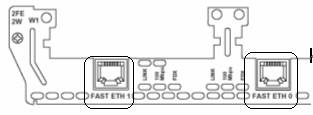
Figure 4 (2) AUI port
We also talked about the AUI port in the local area network. It is a network interface used to connect with a thick coaxial cable. In fact, the AUI port is also commonly used to connect to the WAN, but this interface type is rarely used in the WAN. On the Cisco 2600 series routers, two WAN connection ports, AUI and RJ-45, are provided. Users can select the appropriate type according to their needs, as shown in Figure 5.

Figure 5
3) High-speed synchronous serial port
In the WAN connection of the router, the most widely used port is still called "high-speed synchronous serial port" (SERIAL). This kind of port is mainly used to connect the currently widely used DDN, Frame Relay, X.25 , PSTN (Analog Telephone Line) and other network connection modes. Sometimes private lines are connected between enterprise networks through WAN connection technologies such as DDN or X.25. This kind of synchronization port generally requires a very high rate, because in general, both ends of the network connected through this port require real-time synchronization. Figure 6 shows a high-speed synchronous serial port.
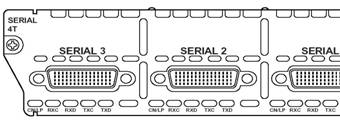
Image 6
(4) Asynchronous serial port
Asynchronous serial port (ASYNC) is mainly used for connection of Modem or Modem pool. It is used to enable remote computers to dial into the network through the public telephone network. Compared with the synchronous port described above, this asynchronous port requires much looser speed, because it does not require the two ends of the network to maintain real-time synchronization, but only needs to be continuous. So what we see when we go online is not necessarily the real-time content on the website, but this is not important, because after all, this delay is very small, the important thing is to keep the normal download of the page when browsing the page. Figure 7 shows the asynchronous serial port.
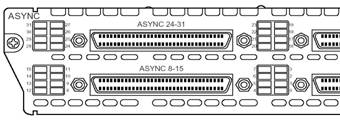
Figure 7 (5) ISDN BRI port
Because ISDN has its unique aspect in the connection speed of the Internet access method, it was fully applied in the Internet connection method when ISDN first emerged. The ISDN BRI port is used to connect ISDN lines to the Internet or other remote networks through routers, and can achieve a communication rate of 128Kbps. ISDN has two rate connection ports, one is ISDN BRI (Basic Rate Interface) and the other is ISDN PRI (Primary Rate Interface). The ISDN BRI port uses the RJ-45 standard, and the connection to ISDN NT1 uses RJ- 45-to-RJ-45 straight line. Figure 8 shows the ISDN BRI port.
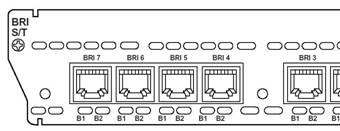
Figure 8 3. Router configuration interface
There are actually two configuration ports for the router, namely "Console" and "AUX". "Console" is usually used for basic configuration of the router and connected to the computer through a dedicated connection, and "AUX" is used for the router. Used for remote configuration connection.
(1) Console port
The console port is directly connected to the serial port of the computer using a dedicated configuration connection, and a terminal emulation program (such as "Super Terminal" under Windows) is used for local configuration of the router. The console ports of routers are mostly RJ-45 ports. Figure 9 contains a Console configuration port.
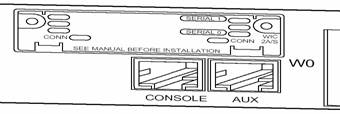
Figure 9 (2) AUX port
The AUX port is an asynchronous port, which is mainly used for remote configuration, and can also be used for dial-up connection, and can also be connected to the MODEM through the transceiver. Support hardware flow control (Hardware Flow Control). The AUX port and the Console port are usually placed together because their respective configuration environments are different. Still see Figure 9 above.
Flum Float,Flum Float 3000 Puffs,Flum Float Vape,Flum Float Disposable
Shenzhen Zpal Technology Co.,Ltd , https://www.zpalvapes.com